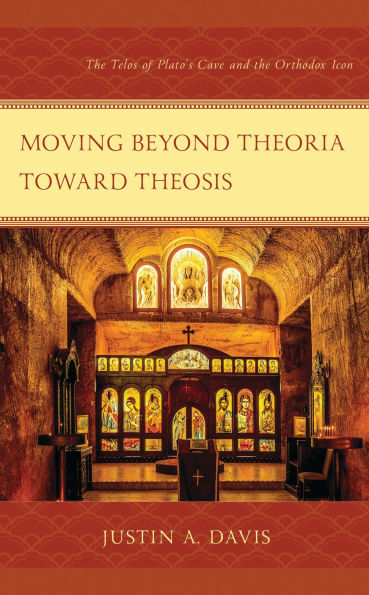Moving Beyond Theoria Towards Theosis focuses on the telos of man as understood in Plato’s theoria, envisioned in the allegory of the cave, and early Christian reinterpretation of theoria as theosis. In his famed allegory of the cave, Plato maintains that real life exists beyond our base perceptions of reality and is found in the realm of ideas. Theoria is eternal rest in this realm and is understood as the telos of mankind. Plato’s theoria underwent change as it was reinterpreted under middle-Platonic and neo-Platonic thought. These systems incorporated a more mature idea of the divine than Plato, but still minimized the material world. This book explores how early Christianity inherited Plato’s cosmology and terminology. Theoria was also reinterpreted within the Christian context. Eventually the term was abandoned for theosis. Theosis is beyond theoria, as it includes contemplation of the forms as well as union with the source of the forms and the affirmation of the material realm. In this volume, Justin A. Davis shows how the Orthodox use of icons can be key to understanding theosis. The icon is a material object that connects to a higher reality, and ultimately toward union with the divine. Plato’s cosmology is collapsed and transfigured in union with the uncreated energy of God. Icons are the depiction of spiritual ascesis and the new telos of man, theosis.
1145072857
Moving beyond Theoria toward Theosis: The Telos of Plato's Cave and the Orthodox Icon
Moving Beyond Theoria Towards Theosis focuses on the telos of man as understood in Plato’s theoria, envisioned in the allegory of the cave, and early Christian reinterpretation of theoria as theosis. In his famed allegory of the cave, Plato maintains that real life exists beyond our base perceptions of reality and is found in the realm of ideas. Theoria is eternal rest in this realm and is understood as the telos of mankind. Plato’s theoria underwent change as it was reinterpreted under middle-Platonic and neo-Platonic thought. These systems incorporated a more mature idea of the divine than Plato, but still minimized the material world. This book explores how early Christianity inherited Plato’s cosmology and terminology. Theoria was also reinterpreted within the Christian context. Eventually the term was abandoned for theosis. Theosis is beyond theoria, as it includes contemplation of the forms as well as union with the source of the forms and the affirmation of the material realm. In this volume, Justin A. Davis shows how the Orthodox use of icons can be key to understanding theosis. The icon is a material object that connects to a higher reality, and ultimately toward union with the divine. Plato’s cosmology is collapsed and transfigured in union with the uncreated energy of God. Icons are the depiction of spiritual ascesis and the new telos of man, theosis.
108.0
In Stock
5
1

Moving beyond Theoria toward Theosis: The Telos of Plato's Cave and the Orthodox Icon
300
Moving beyond Theoria toward Theosis: The Telos of Plato's Cave and the Orthodox Icon
300Related collections and offers
108.0
In Stock

Product Details
| ISBN-13: | 9781666949568 |
|---|---|
| Publisher: | Bloomsbury Publishing |
| Publication date: | 06/10/2024 |
| Sold by: | Barnes & Noble |
| Format: | eBook |
| Pages: | 300 |
| File size: | 4 MB |
About the Author
From the B&N Reads Blog
